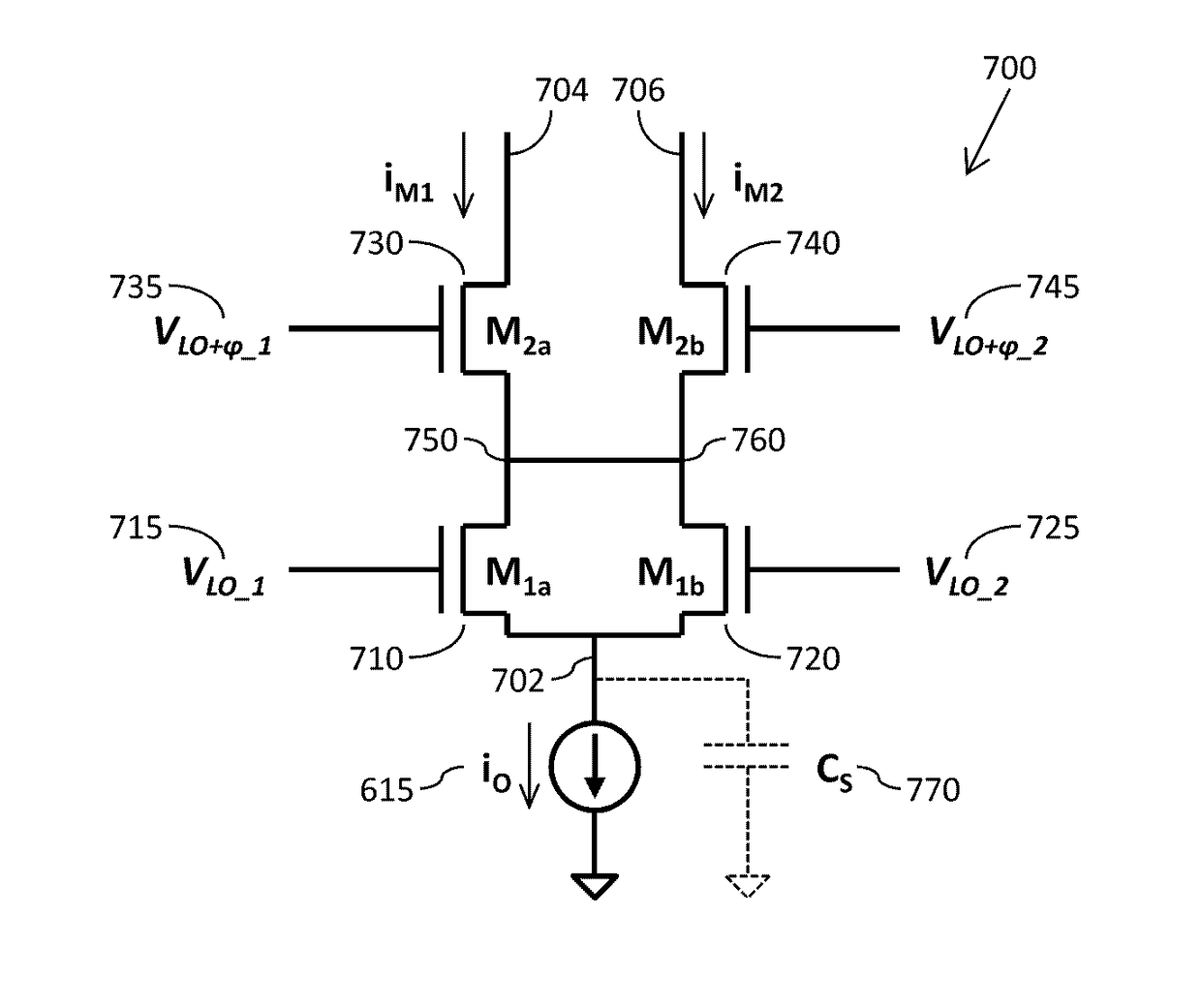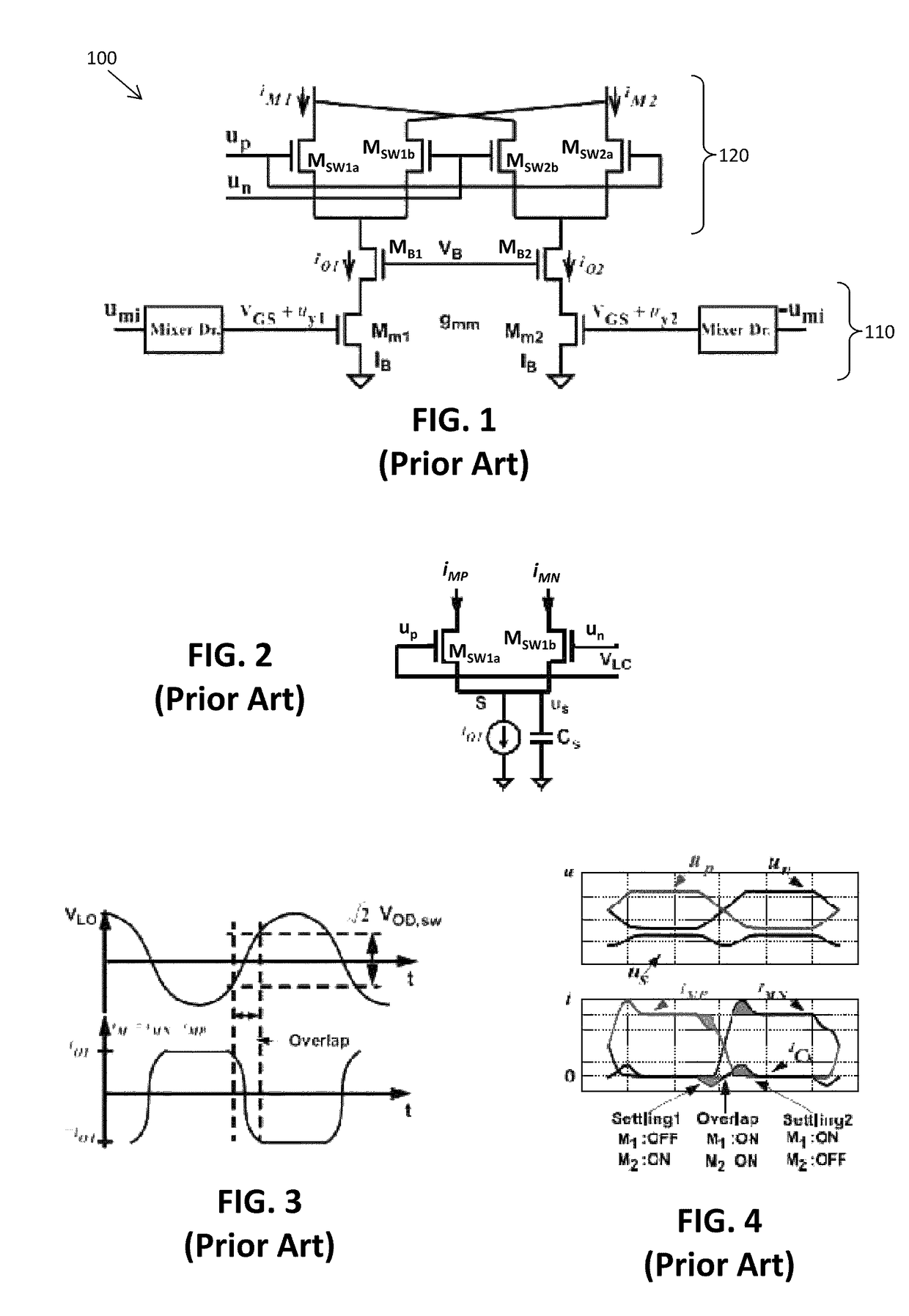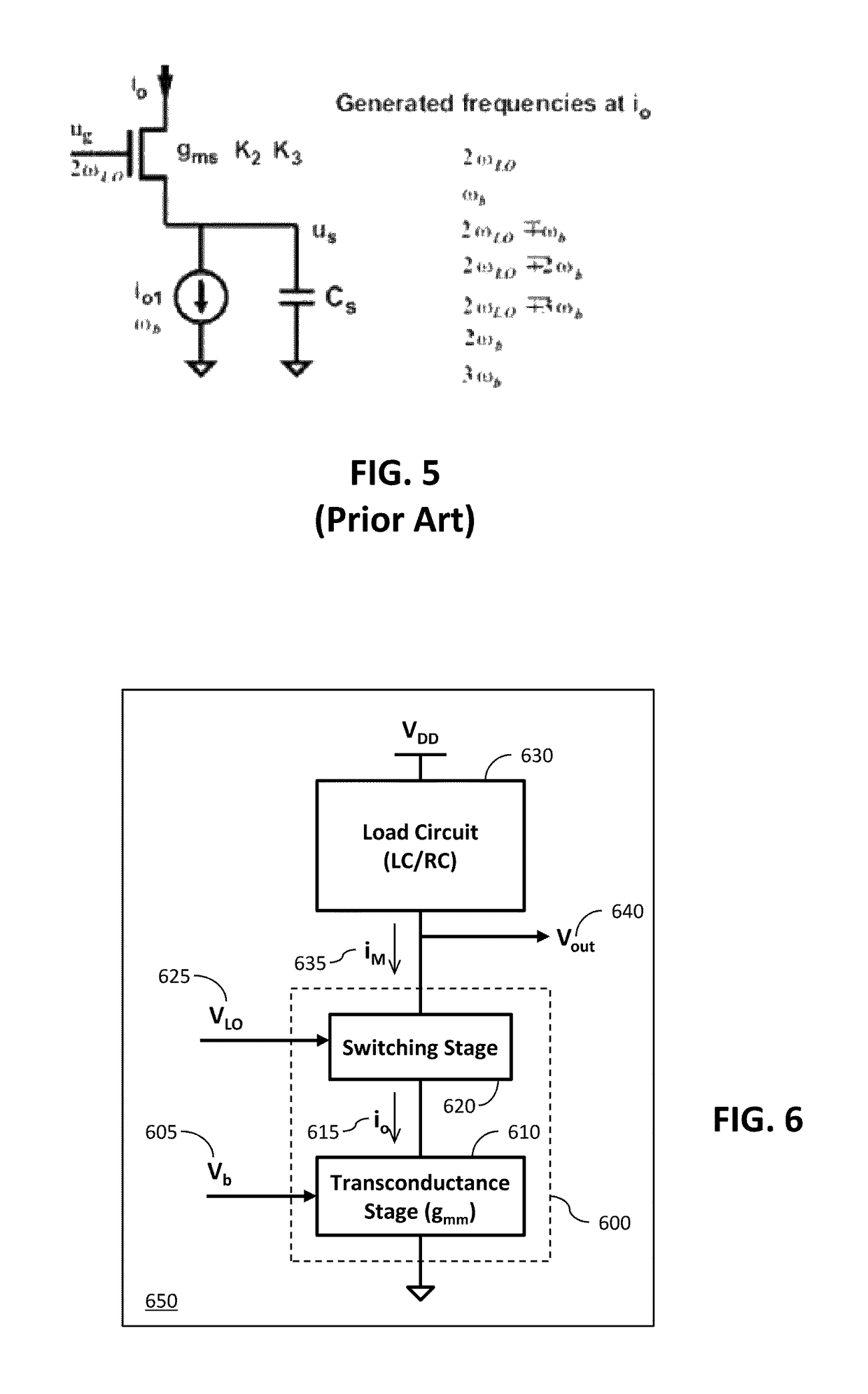Switching circuit
a switching circuit and circuit technology, applied in the field of switching circuits, can solve problems such as deterioration of mixer operation, overlap, and corruption of fundamental signals
- Summary
- Abstract
- Description
- Claims
- Application Information
AI Technical Summary
Benefits of technology
Problems solved by technology
Method used
Image
Examples
Embodiment Construction
[0060]According to examples of the present invention, there is provided a switching circuit for an active mixer. The switching circuit comprises a first pair of parallel switching devices and a second pair of parallel switching devices. The first and second pairs of parallel switching devices are arranged in a stacked configuration between an input node at which an input current comprising a first input frequency signal is received and a pair of differential output nodes. The first pair of switching devices are controlled by a second input frequency signal. The second pair of switching devices are controlled by a phase-shifted counterpart of the second input frequency signal. A common node between the first switching devices of the first and second pairs of switching devices is electrically coupled to a common node between the second switching devices of the first and second pairs of switching devices.
[0061]Advantageously, by stacking two pairs of switching devices in this manner, a...
PUM
 Login to View More
Login to View More Abstract
Description
Claims
Application Information
 Login to View More
Login to View More - R&D
- Intellectual Property
- Life Sciences
- Materials
- Tech Scout
- Unparalleled Data Quality
- Higher Quality Content
- 60% Fewer Hallucinations
Browse by: Latest US Patents, China's latest patents, Technical Efficacy Thesaurus, Application Domain, Technology Topic, Popular Technical Reports.
© 2025 PatSnap. All rights reserved.Legal|Privacy policy|Modern Slavery Act Transparency Statement|Sitemap|About US| Contact US: help@patsnap.com



